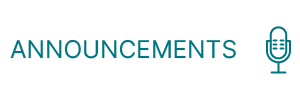This article is the first in a series focusing on feedback that moves learning forward. Built on the lessons learned from evidence submitted by schools and conversations with administrators, teachers and students, this series will encourage thinking and provide resources to promote effective feedback practices.
By Teresa Rogers
Teresa.Rogers@education.ky.gov
When Rick Stiggins’ book, “Classroom Assessment for Student Learning” hit the shelves in 2004, expectations for student achievement soared to an all-time high in classrooms and districts across Kentucky. In chapter 1, Stiggins asserts, “Used with skill, assessment can motivate the unmotivated, restore the desire to learn, and encourage students to keep learning, and it can actually create – not simply measure – increased achievement.”
Teachers worked diligently to understand and implement Stiggins’ Seven Keys of Assessment for Learning to create balanced and sound assessment systems based on a clear purpose, multiple measures and specific targets. Sadly, however, the efforts have not provided the results Kentucky students deserve. The percentage of proficient and distinguished writers across grade levels between 2013 and 2016 failed to show any substantial gain on statewide on-demand writing assessments.
Percentage of Kentucky Students Scoring Proficient/Distinguished in On-Demand Writing Assessments
| 2013-14 School Year | 2014-15 School Year | 2015-16 School Year | |
|---|---|---|---|
| Elementary | 38.7 | 43.8 | 41.0 |
| Middle School | 43.4 | 39.2 | 44.4 |
| High School | 43.3 | 51.6 | 43.5 |
While numerous factors may be responsible, glimpses of instructional practices gleaned through the Writing Program Review audit process provided a unique insight into one of Stiggins’ key strategies, the practice of providing feedback. The KDE Program Review teams found feedback to be a regular practice in most classrooms, but the quality of the feedback may be an unintentional cause of the lackluster growth.
According to John Hattie – professor of education and director of the Melbourne Education Research Institute at the University of Melbourne, Australia – and Helen Timperley, professor of education at the University of Auckland, feedback is one of the most powerful influences on learning and achievement, but this impact can be either positive or negative. Dylan Wiliam, a British educationalist and emeritus professor of educational assessment at the UCL Institute of Education, found that feedback could actually lower performance. In his “Embedded Formative Assessment,” Wiliam states, “In almost two out of every five carefully conducted studies, the participants would have done better if the feedback had not been given!”
What are the critical factors that influence the outcome of feedback?
To answer that question, Wiliam points to the research of Avi Kluger, professor and researcher at the Hebrew University of Jerusalem, and Angelo DeNisi, professor and researcher at Tulane University, who studied the factors that determine when feedback does and does not improve student performance. They discovered that when feedback draws attention to a gap between a students’ current performance and the goal, what happened next depended on whether the current performance was higher or lower than the goal.
What might happen if the feedback indicates the student already has surpassed his or her goal?
Teachers hope a student would adjust their goal to more demanding criteria, said Kluger and DeNisi, but some students see it as a sign that they are finished with the task and no more effort is required. If success came too easily, they may believe the goal was insignificant and that any feedback is irrelevant.
What might happen if the feedback indicates the student performance falls short of the goal?
According to Kluger and DeNisi, students who fall short of the goal may believe it’s too much work and, even though they are capable of more, simply decide to settle for a B or C. They may fear what others will think when they learn of their mediocre performance. Students may assume that they will never meet the goal and simply give up.
Stanford University researcher Carol S. Dweck described this as “learned helplessness,” when students internalize the belief that, “I’m no good at writing.” Students who feel that they have done the best they could but still fall short of the goal may reject the feedback altogether.
And finally, the last kind of response, and presumably the one intended by the person giving feedback, is to change one’s behavior to meet the goal.
How do we know how students will respond?
While no one can predict how students will respond to feedback, Dweck described a “winning combination” of high expectations and effective support. She explained the messages that help students succeed are ones that, by design and via daily instruction, tell students:
- Your intelligence is something that can and will develop, with effort, good strategies and support from this school.
- You have a purpose. You are “doing school” so that you can contribute something to your family and to the world.
- You belong here, in this school. This school is for you.
- We, as your teachers, will set high standards for you and we will give you what you need to succeed.
Additionally, it’s imperative to develop strong, positive and productive relationships with students. This, combined with the information of what they know, where they make errors, when they have misconceptions and when they are disengaged, will allow you to respond appropriately.
To learn more about supporting a growth mindset among your students, check out these resources from Edutopia. Over the next few months, we’ll address the specific keys to consider when providing feedback.



Leave A Comment